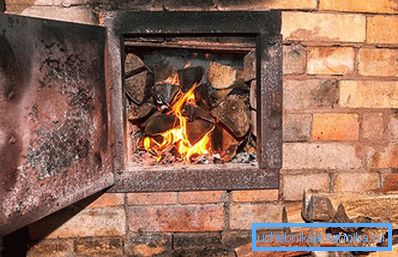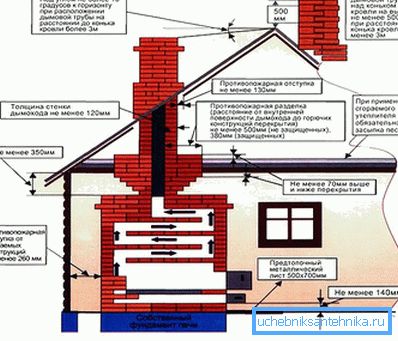Heating a private house without gas and electricity
In areas of private development, remote from the existing gas and electric lines of the required capacity, homeowners have to resort to alternative types of heating homes. Heating a private house without gas and electricity can be organized in various ways that meet the basic requirements for household heating systems. The most popular of them are:
- traditional stoves or fireplaces using wood as a fuel cell;
- solid fuel non-volatile boilers operating on the same wood, coal or more modern types of fuel (for example, pallets).
Note also that both of the above heating options can be used by owners of private households who want to save on centralized heating of their home.
Alternative heat sources

The category of heating systems that can generate heat when wood and coal are burned in them includes:
- brick or metal furnaces;
- fireplaces;
- solid fuel boilers.
Immediately we warn that fireplaces can be classified as heating systems with a big stretch, since they do not provide so much heat and are used most often as an element of the interior, creating an atmosphere of comfort and convenience.
Heating stoves

A well-planned and well-laid brick oven can fully provide the required heating of the dwelling. In that case, if you manage to locate it in the center of a residential building (when a small part of the furnace wall will go into each room), you will not have to worry about the warming up of inhabited living spaces.
A water coil can be built into the furnace, from which hot water will flow into a distribution system consisting of small radiators placed in a number of rooms.
Another common method of heating a house without the use of gas and electricity is the installation of metal stoves or "burzhuek", the manufacture of which will require you to significantly lower costs compared to capital brick construction. In addition, you can make such a furnace with your own hands.
Separate models of metal furnaces (similar to brick ones) can be equipped with coils used to heat water circulating in an improvised heating network.
Solid fuel boilers

The most convenient way to organize autonomous heating involves the use of modern solid fuel boilers for these purposes. The simplest models of such units have a non-volatile design, in which the intensity of the air flow entering the combustion chamber is controlled by a special built-in thermostat.
The implementation of this method of heating is possible only under the following conditions:
- availability of high-quality traction in the chimney;
- the use of a coolant circulation circuit with the appropriate location of the inlet and outlet pipes (the so-called "return" must necessarily be located below the level of the inlet pipe);
- the heating system must operate in the free flow mode and communicate with the atmosphere through the expansion tank located at the top of the circuit;
- For reliable and trouble-free functioning of the system, a competent approach to the choice of the layout of the heating channels (pipes), as well as their diameters and slopes is necessary.
Fireplaces

Traditional open fireplaces belong to heating systems that have a rather low efficiency, which most often does not exceed 15–20% (this means that most of the fuel put into them, figuratively speaking, will “fly off into the chimney”).
Higher efficiency have fireplaces with a closed firebox, providing heat enough to fully heat small rooms (such a fireplace will not be enough to heat the whole house).

The best option for fireplace heating is considered to be the choice of the so-called heat fireplace, which has a closed-type firebox with double metal walls, between which is placed a heat exchanger made in the form of a coil. The use of an additional circuit in the heat fireplace, connected to an external water heating system, will allow you to noticeably increase its efficiency.

So, if you decide to make alternative heating in the house, then applying the above recommendations, you can cope with the task without the involvement of specialists. This will save you money. If you have any questions on the topic, then write comments on this article.
Video: how to make home heating without gas and electricity
Scheme




